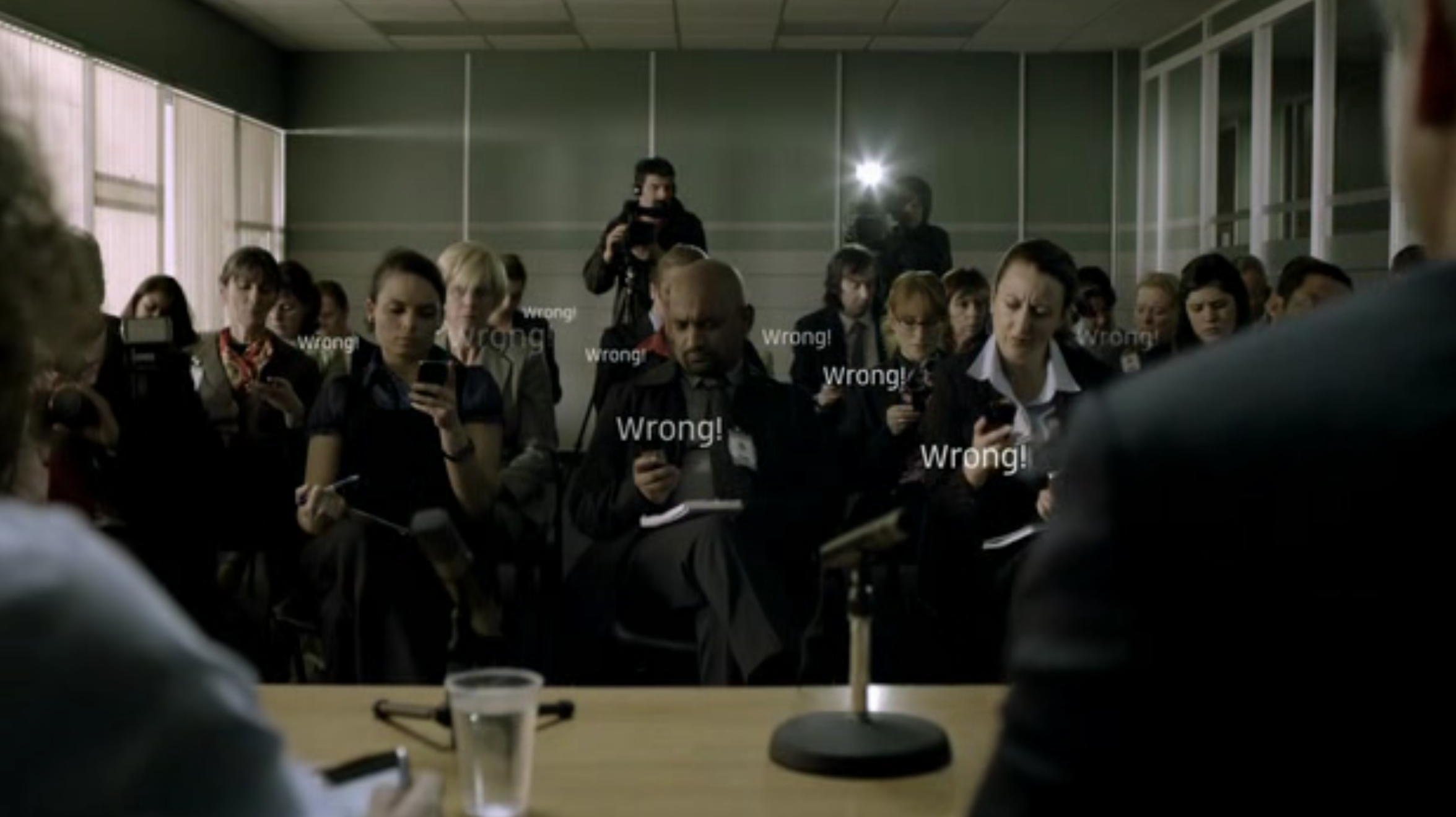Everybody Hurts
R.E.M.
In
REM’s music video for ‘Everybody Hurts’, a linear narrative structure is
featured which can be examined using Todorov’s three act structure theory. The
setting of the video is a highway with cars moving (the equilibrium) and
throughout this first act different characters are introduced. The inciting
incident occurs as the traffic stops, leading into act 2’s disequilibrium (the
singer leaving his car and walking). This is typical of three act narratives
according to Todorov, which always follow a very similar structure. In act 2 of
the video, the narrative finds its resolution when all the characters leave
their cars and begin walking with the singer; this carries on into act 3, where
the characters walking becomes the new equilibrium. Using Todorov’s concepts,
it can be assumed that this video features a successful three-act structure
narrative and succeeds at telling the story it sets out to tell.
End of Act 1 End of Act 2 End of Act 3
However,
at the end of the video there is a separate conclusion in which the music stops
playing and we hear the voice of a news reporter claiming that all the people
in the video ‘just got out and walked’ and that ‘they cannot find anyone’. This
does not fit exactly with Todorov’s concepts, as although this could be seen as
a ‘resolution’ to the narrative, it is featured after act 2 and 3, and is
presented as a very short fourth act.
Narrative
devices are used very effectively in this music video, the most significant being
the use of subtitles as an expression of the characters’ thoughts. These subtitles
allow for the audience to better understand the characters and the story,
without the need for diegetic sound overlapping the music. At the beginning of
the video, the subtitles appear to simply mimic the lyrics; however, it soon
changes to the thoughts of a child saying “They’re all stuck.” I find that
using this as the first non-lyric subtitle is an interesting and significant
choice; it provides impact as it frames the narrative and tells us immediately
that something is wrong with the characters. They’re stuck physically in the
traffic jam, but they’re also stuck metaphorically within their own sadness and
emotions.
Another
narrative device used is the car’s window screens themselves. The windows
represent an impassable barrier to the outside world, which all the characters
are trapped behind to represent their disconnection and dissatisfaction with
life. This works as a narrative device because the audience can see from the
start of the video that Stipes and the band are trapped in a claustrophobic and
colourless space.
The
video can be analysed using Barthes’ concepts of proairetic, enigmatic and symbolic
codes. Within the narrative, proairetic code is most relevant; proairetic is
defined as an opening of an action which makes the audience want to see closure
of – in this case being the depression and sadness of the characters being
portrayed through subtitled inner-dialogue. The audience wish to see a
resolution to the different characters’ problems, which is indeed given at the
climax of the video when all the characters leave their cars and begin walking
together (symbolic of how the depressed characters “are not alone”).










